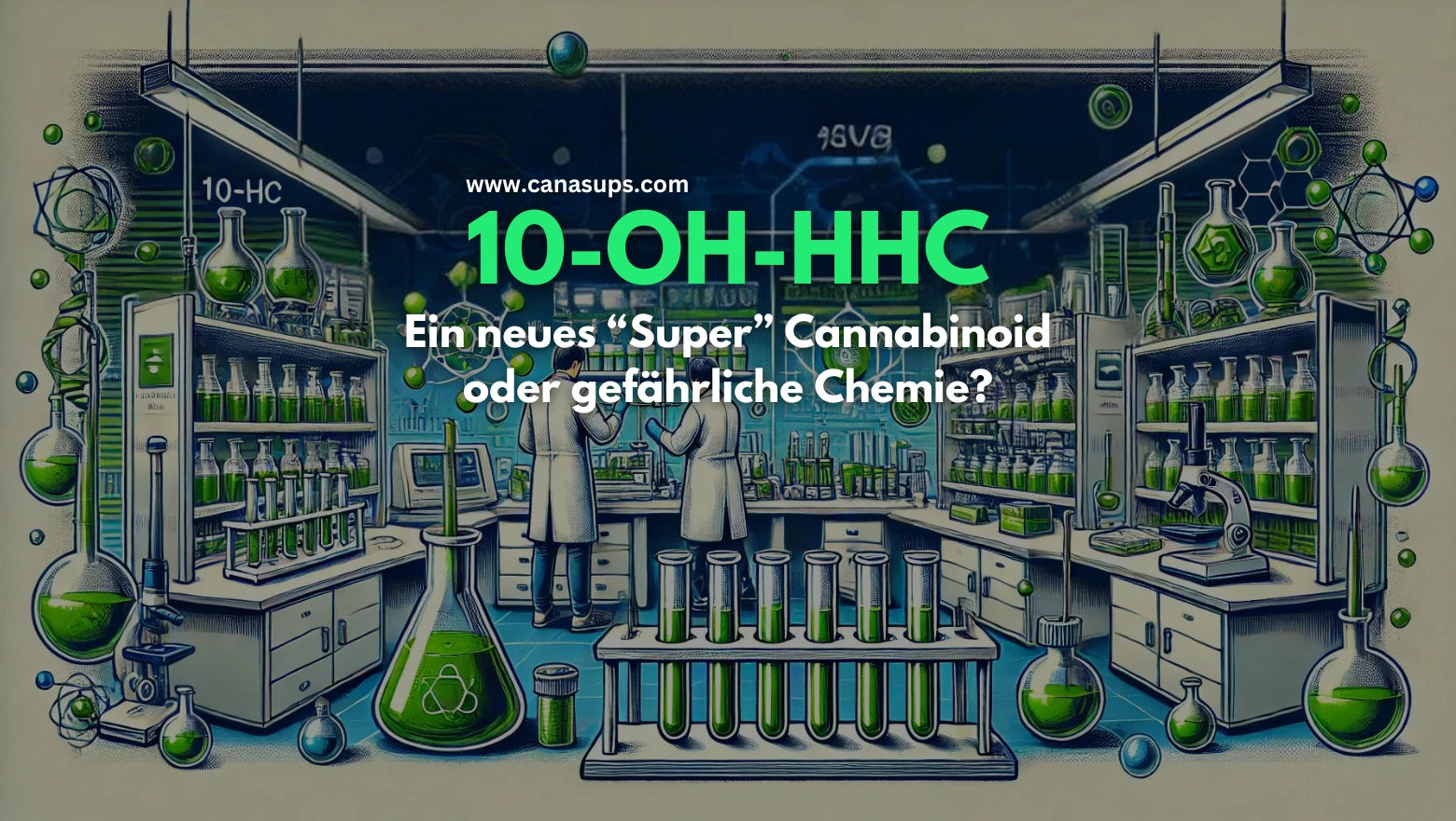In the ever-expanding world of cannabinoids, 10-OH-HHC, also known as 10-hydroxyhexahydrocannabinol, has attracted considerable attention. This relatively new cannabinoid promises some interesting properties and applications. However, there are also critical voices warning of the potential risks. In this article, we provide a comprehensive overview of 10-OH-HHC and explain why we view it with skepticism.
Table of contents: |
What is 10-OH-HHC?
10-OH-HHC is a chemical derivative of hexahydrocannabinol (HHC). In chemistry, a derivative (Latin) refers to a derived substance with a similar structure (= cleavage product). Derivatives are substances that have a different atom or an entire group of atoms instead of a hydrogen atom, or from which one or more atoms/groups of atoms have been removed. This is created by the hydrogenation of tetrahydrocannabinol (THC), the main psychoactive component of cannabis. The additional hydroxy group at the tenth position of the molecule gives 10-OH-HHC its specific properties.
Manufacturing and Chemistry
The production of 10-OH-HHC is a complex process. First, CBD is extracted from hemp, which is then converted to HHC through hydrogenation. HHC is then modified to 10-OH-HHC by adding hydroxyl groups. This complex chemical process makes it a semi-synthetic cannabinoid, meaning it is not naturally extracted from the cannabis plant.
Effects
The effects of 10-OH-HHC have not yet been fully researched. Users report a similar effect to its now-illegal predecessor, HHC: a quick and strong high that then wears off just as quickly. Therefore, the dose is often increased, causing users to exceed it. It is also unknown how this chemical affects the human body and its organs (lungs, heart, brain).
Quality and safety
Another concern is the quality and safety of the products on the market. Because 10-OH-HHC is relatively new, there are no uniform quality standards yet. This means that many products on the market are substandard and may contain contaminants. These substandard products not only pose health risks but can also lead to unwanted psychoactive effects that are unpredictable.
Our critical perspective
Despite its interesting properties, we view 10-OH-HHC with skepticism. The main reason for this is that it is a synthetic derivative whose long-term effects and safety have not yet been sufficiently researched. Many manufacturers offer inferior products that resemble synthetic drugs like Spice more than natural cannabinoids. This poses a significant risk to consumers. We therefore advise everyone not to consume this product.
Legal alternatives: THC
Given the uncertainties surrounding 10-OH-HHC, we recommend using legal alternatives such as THC. THC is well-researched, and its effects are better documented. Furthermore, there are strict quality standards for THC that ensure the safety and efficacy of the products. We therefore recommend choosing proven and safe alternatives when choosing cannabinoids. Whether as a patient from a pharmacy, growing your own seeds with seeds from our partner Stoned Apes , or using products from our smart shop .
Conclusion
10-OH-HHC is an exciting, yet controversial, new cannabinoid. While some of its properties appear promising, we believe the potential risks outweigh the risks. Insufficient research, the inferior quality of many products, and the unpredictable effects make 10-OH-HHC an unsafe choice. We therefore recommend opting for proven and safe alternatives such as THC to ensure a safe and enjoyable consumption experience.












